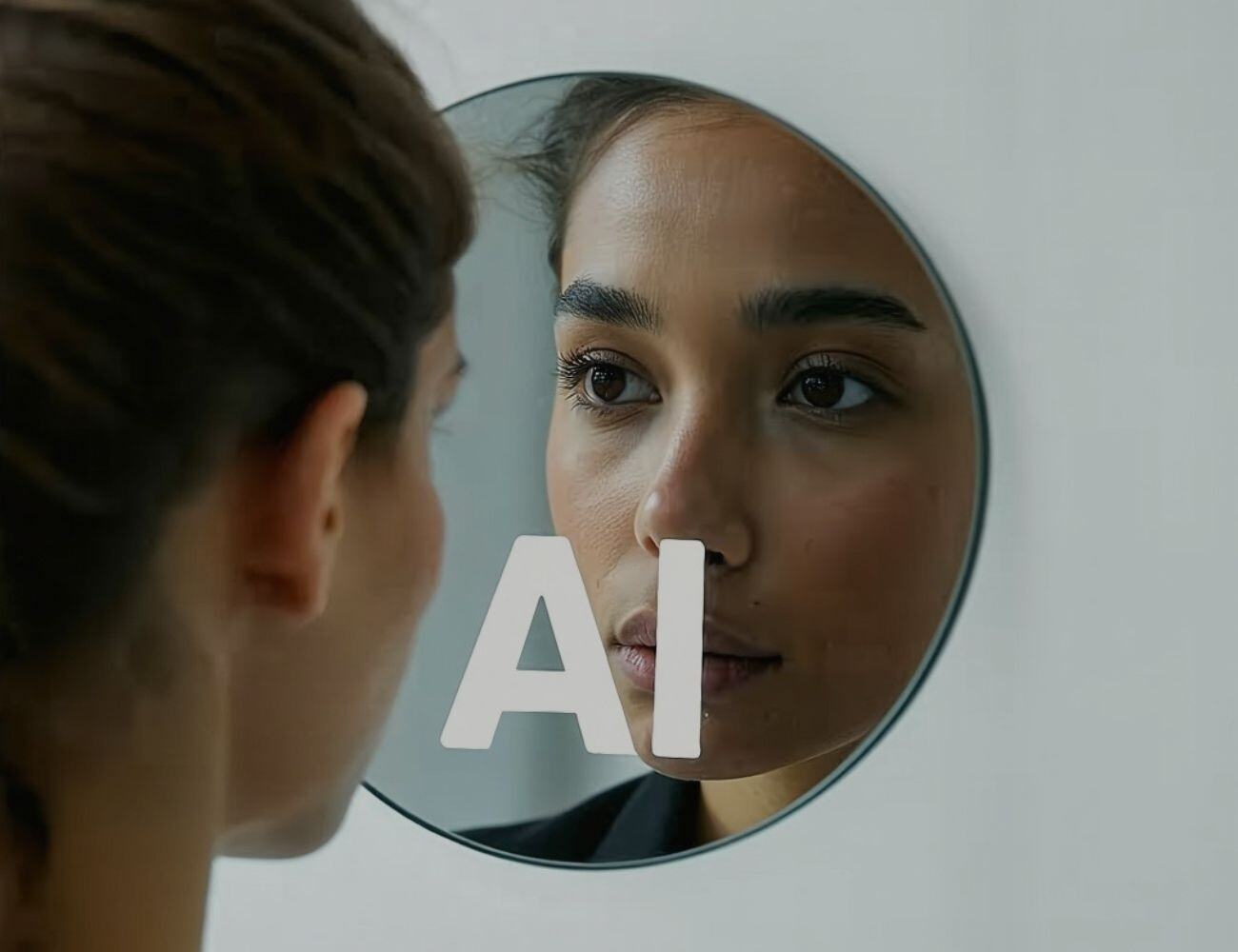How do we learn?
Well, the simple answer would be to say that we observe, analyse, draw conclusions and guess ourselves forward.
Imagine for example teaching a child to speak. They hear people talk, they start recognising certain words and attach them to objects, verbs and situations, they practice conversation and get corrected, they practice more, and more, and more. Over time, they get better at communicating by learning from both examples and feedback.
Now this is just one example, but the principle is basically the same for most types of learning.
Artificial intelligence also works in a similar way—except that instead of a brain, it’s using algorithms and maths to find patterns, make predictions and improve over time.
And as AI becomes more advanced, our relationship with it is becoming more familiar, even personal. We’re no longer just using machines as tools; we’re engaging in conversations and sometimes even turning to AI for advice or bouncing ideas around like we would with a colleague or a friend.
It’s a relationship dynamic that, not too long ago, felt like something out of a science fiction. In the movie Her (2013), we watched a world where people didn’t just use AI—they formed deep, meaningful relationships with it. Today, that world doesn’t feel so far away. AI has quietly become part of our daily lives, and the way we interact with it matters more than ever.
AI systems like ChatGPT and Gemini are trained on massive amounts of human data—books, articles, websites, images, and conversations. During training, they analyse all this information to figure out how we communicate, what we value, and how we structure our thoughts. But that’s not where it ends.
Every time we interact with AI, we continue to teach it. We give it prompts, ask questions, give feedback, or correct its mistakes. And in doing so, we are part of a feedback loop where AI is continuously learning—not just from what we say, but how we say it.
This raises an interesting question: if AI learns from us, what are we really teaching it?
Recently, Christopher-Robin Eklund, Global Head of Masters & Head of Methodology at Hyper Island, shared an example that highlights a moment when Gemini, Google’s AI chatbot, made a slip in language use. In its response Gemini writes how a group of students “felt” about a project when the correct term in this case clearly is supposed to be “thought”.
Christopher-Robin quickly pointed this out and asked Gemini to not mistake feelings from thoughts. It’s a subtle distinction, but an important one.
When we confuse thoughts with feelings, we risk blurring our communication.
Thoughts represent what we believe or conclude. They lead to reasoning and decisions and can be discussed or debated. Feelings, on the other hand, describe our emotional experiences, which are subjective and personal.
Mixing thoughts and feelings can create confusion in decision-making, accountability, and clarity—not just for humans, but also for AI. If AI learns to blur the line between them, it can misinterpret our intent, our judgment, or even the tone of a conversation.
In the example that Christopher-Robin shared, Gemini acknowledged the correction, apologised for the confusion, and even thanked him for helping it improve.
The AI Feedback Loop
What was so striking about this exchange was how naturally AI picked up on something we often do—blurring the line between thoughts and feelings in the way we talk. It’s such a common habit that we barely notice it ourselves. But here’s the thing: if we’re not careful, those little slips can start to shape how AI understands us… and how it talks back.
And it doesn’t end there. The way AI talks to us then influences how other people interact with it. If AI starts reflecting unclear language, chances are the next person chatting with it might pick up on that too—and before you know it, we’re all passing around the same sloppy habits. It’s a bit like when someone starts saying a new phrase at work, and suddenly, everyone’s saying it without even realising where it came from.
So it’s not about being perfect—it’s just about being a little more mindful. Because every time we interact with AI, we’re part of this feedback loop: we teach it, and then it teaches others. And that’s kind of fascinating, when you think about it.
Like I mentioned earlier, this might seem like a small thing—and in many ways, it is. It’s just one example. But it’s also a meaningful one. When we’re clear about what we think and what we feel, we tend to make better decisions, have clearer conversations, and avoid a lot of unnecessary confusion. And if we can help AI make that distinction too, we’re teaching it to communicate in a way that’s clearer and more helpful for everyone.
So, next time you catch yourself saying, “I feel like…” take a second and ask yourself—is this a feeling or a thought? You might be surprised how often we blur the two without realising it.
And hey, if we tidy up our language a little, there’s a good chance our AI assistants will start doing the same. It’s a small shift, but it might just make our future conversations—with people and AI—a bit clearer.
After all, what we preach is what we teach.
Happy prompting!
At Hyper Island, we offer programs and courses designed to empower individuals and organizations to embrace the future of work.
Explore how we can support your journey toward growth and innovation by checking out our courses and tailored solutions for business.


WANT TO GET NOTIFIED ABOUT OUR EVENTS?
Join our mailing list for tips, events, and opportunities.

